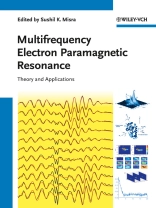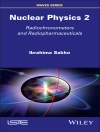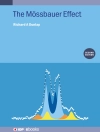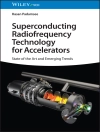Filling the gap for a systematic, authoritative, and up-to-date review of this cutting-edge technique, this book covers both low and high frequency EPR, emphasizing the importance of adopting the multifrequency approach to study paramagnetic systems in full detail by using the EPR method. In so doing, it discusses not only the underlying theory and applications, but also all recent advances — with a final section devoted to future perspectives.
Tabela de Conteúdo
1. Introduction
2. Multifrequency Aspects of EPR
3. Basic Theory of EPR
PART A. EXPERIMENTAL
4. Spectrometers
4.1 Zero-field EPR
4.2 Low Frequency CW EPR Spectrometers
4.3 High Frequencies
4.4 Pulsed Technique
5. Multifrequency EPR: Experimental Considerations
5.1 Multiarm EPR Spectroscopy at Multiple Microwave Frequencies
5.2 Resonators for Multifrequency EPR of Spin Labels
5.3 Multi-frequency EPR Sensitivity
PART B. THEORETICAL
6 First Principles Approach to Spin-Hamiltonian Parameters
7 Spin Hamiltonians and Site Symmetries for Transition Ions
8 Evaluation of Spin Hamiltonian Parameters from Multifrequency EPR Data
9 Simulation of EPR Spectra
10 Relaxation of Paramagnetic Spins
11 Molecular Motions
12 Distance Measurements: CW and Pulse Dipolar EPR
PART C. APPLICATIONS
13 Determination of large Zero Field Splitting
14 Determination of non-coincident anisotrpic tensors
15 Biological Systems
16 Copper Coordination Environments
17 Multifrequency Electron Spin Relaxation Times
18 EPR Imaging
19 Multifrequency EPR Microscopy: Experimental and Theoretical Aspects
20 EPR Studies of Nano-materials
21 Single Molecule Magnets and Magnetic Quantum Tunneling
22 Multifrequency EPR of Photosynthetic Systems
23 Measurement of Superconducting Gaps
24 Dynamic Nuclear Polarization (DNP) at High Magnetic Fields
25 Chemically Induced Dynamic Nuclear Polarization and Chemically Induced Dynamic Electronic Polarization
PART D. FUTURE PERSPECTIVES
26 Future Perspectives
Appendix Fundamental constants and Conversion Factors used in EPR
Sobre o autor
Sushil Misra is a Full Professor of Physics at Concordia University, Montreal, Canada. Professor Misra received his Ph.D. from Saint Louis University, USA, and spent sabbatical leaves at Harvard University, Paul Sabatier University (Toulouse, France), Technische Hogeshule (Delft, Holland), Monash University (Melbourne, Australia), and Cornell University. He has done extensive experimental and theoretical research in the area of electron paramagnetic resonance for the last 28 years, with some 210 papers to his credit. Currently, he is a collaborating faculty member at ACERT (Advanced Center for Electron Spin Research Technology at Cornell University). He has written numerous review articles and book chapters on EPR, and has been invited frequently as a specialist to present lectures at international conferences.












